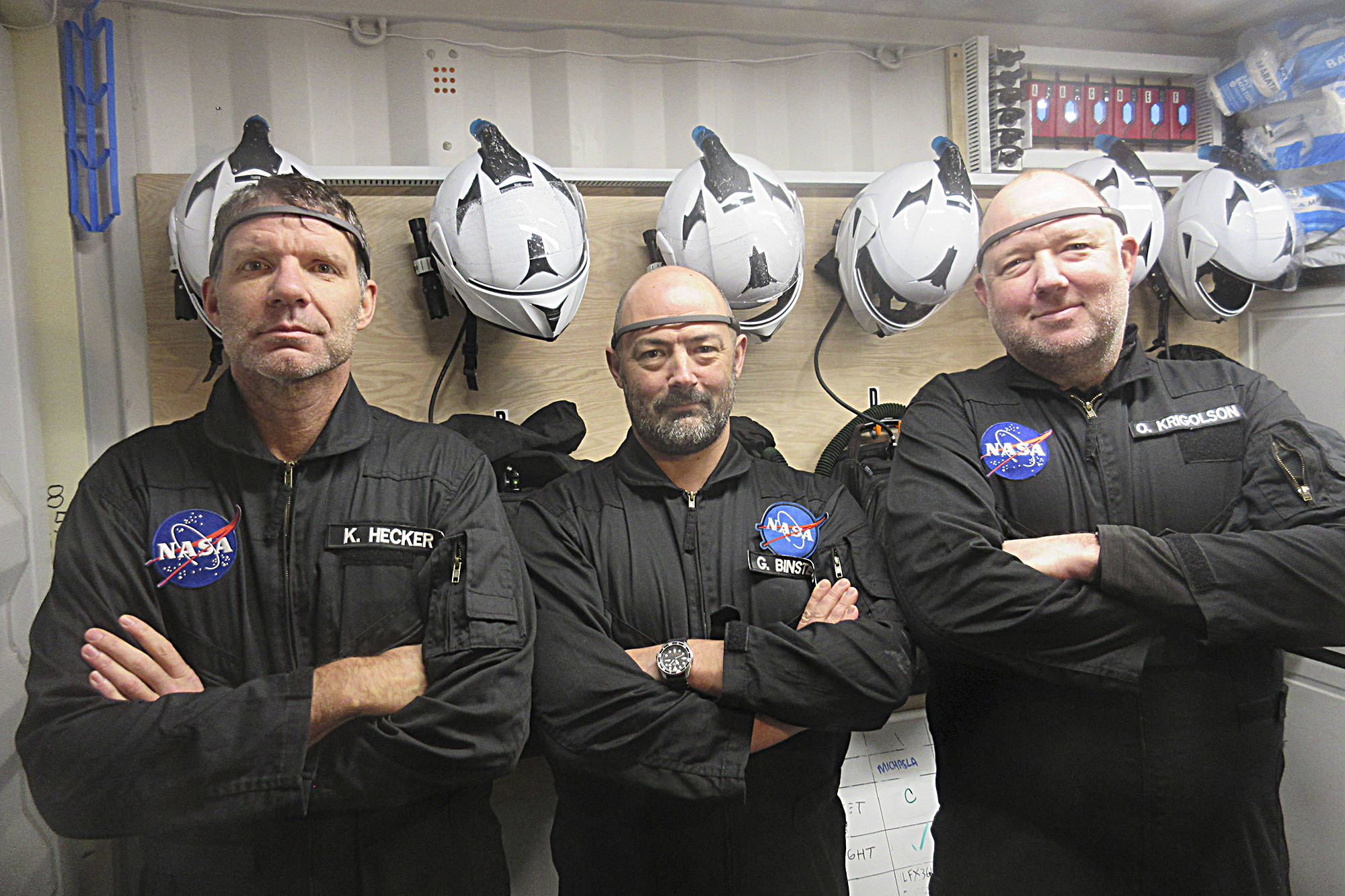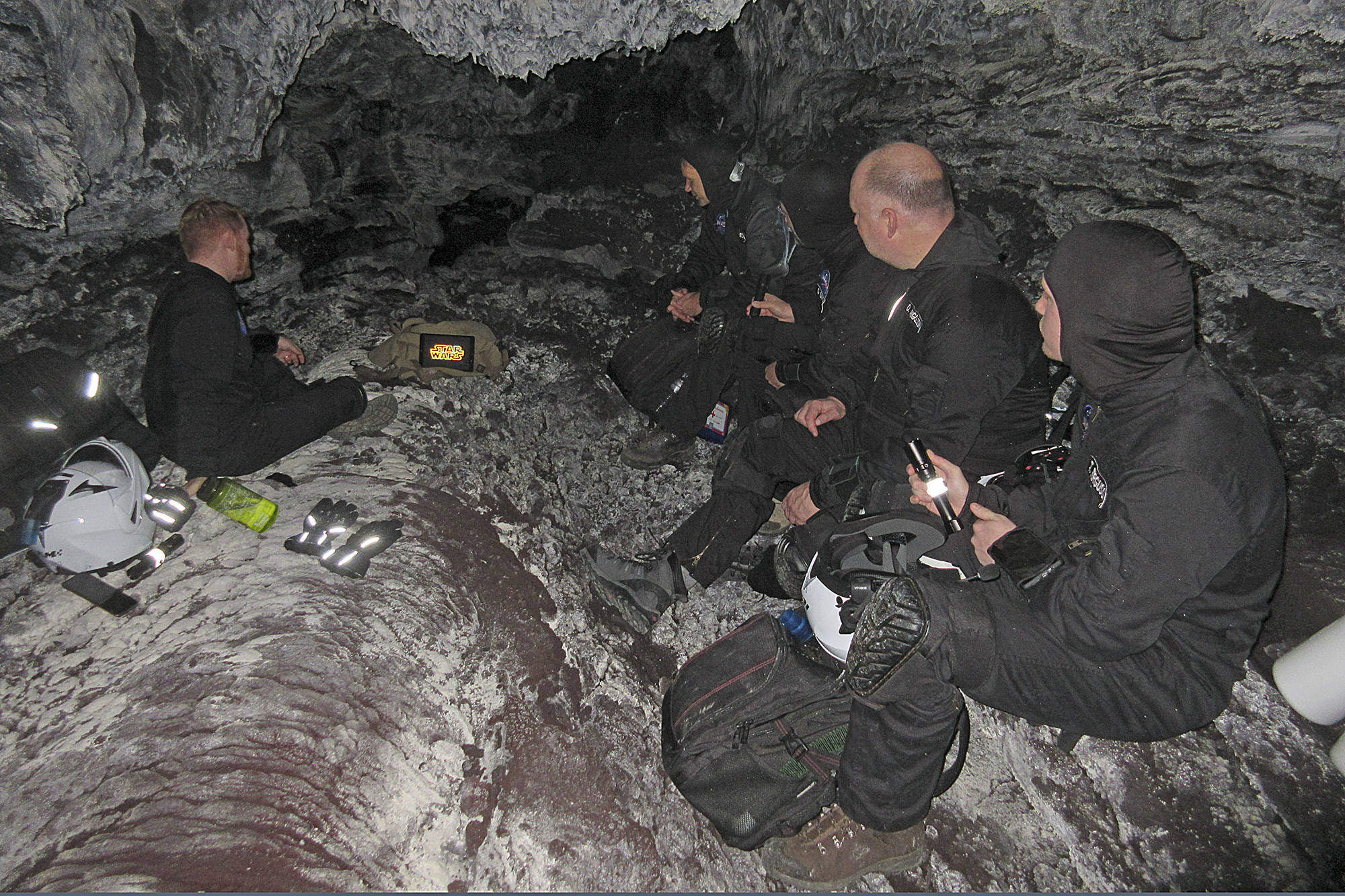When Olav Krigolson was five years old, he told his mom he was going to be an astronaut.
Turns out, he wasn’t too far off.
In December, Krigolson and Kent Hecker, who both grew up in Salmon Arm, took part in a unique trip to ‘outer space’ to measure how fatigue affects the brain function of astronauts. The men were part of a five-member Canadian research team taking part in a project on a Mars simulation on the Big Island of Hawaii.
The site is called the HI-SEAS or Hawaii Space Exploration Analog and Simulation and is used by space agencies.
There they donned bulky spacesuits and lived in the Hab, or Mars habitat, a golf ball-like dome, for eight days, collecting data, eating freeze-dried food and, at times during their 16-hour days, venturing outside on exploratory trips of lava flows.
“So if you’d told us both in high school we’d get PhDs in neuroscience and be going to Mars together, we would have fallen over laughing,” remarked Krigolson.
“It was awesome,” enthused Hecker. “We got to put on space suits and explore lava caves. We reverted back to being kids again.”
The purpose of the mission, which was spearheaded by Krigolson, was actually a proof of concept or test run of brain-testing software that is both mobile and fast, as opposed to a typical EEG (electroencephalogram).
It uses the commercially available Muse EEG headband which evaluates electrical activity in the brain.
Then, via software developed by Krigolson’s lab at the University of Victoria, brain waves are translated into scores measuring characteristics such as fatigue.
To do that, the researchers would play simple games on an iPad three times per day to test their brain function.
Although both men have PhDs in neuroscience, Krigolson says he’s really a mathematician.
“I wrote the algorithm that takes the brain wave data and gives you fatigue scores,” he explained.
Accompanying them were PhD students Chad Williams and Tom Ferguson, as well as Gord Binsted, Dean of the Health and Social Development Faculty at UBCO in Kelowna, who was instrumental in the mission.
Binsted’s sister Kim is a professor at the University of Hawaii and runs the Mars simulation for NASA.
One highlight came about when the heating in the Hab broke down.
In order to empty the dome to facilitate the repair, the researchers were told a solar flare had occurred and they would have to go down into a lava tube to escape the radiation.
One of the students mentioned he had Star Wars, the movie, on his laptop, so there they were, in a lava tube, watching Star Wars.
“Now that, I believe, is a fairly unique experience,” said Krigolson.
Read more: Students inspired by space
Read more: Astronaut thrills kids
Read more: Salmon Arm Tennis Club’s indoor facility moving at smooth clip
Hecker graduated from SAS in 1987, Krigolson a year later. Although they were friends as youngsters and both played basketball in high school, they lost touch until about eight years ago.
Hecker, whose father Ken was a principal and basketball coach in the school district, played basketball for five years for the University of Lethbridge and is now a professor at the University of Calgary.
“He was always a jock and remains a jock,” smiles Ken.
Kent works in veterinary medicine and human medicine research, with a focus on high stress on brain functions, similar to the astronaut testing.
While going through scholarly papers connected to his work, he saw Krigolson’s name.
He contacted him and they reconnected, having now worked together on many projects.
“Very rarely do you get to do something so exciting and so cool,” said Hecker.
Their hope is that the mobile EEG and its software, which can evaluate brain function in just five or six minutes, will be used on a longer simulated mission with real astronauts, and then eventually in space.
So far so good, judging by Day 7 from a blog Krigolson created for the mission.
“I have reviewed our findings multiple times now and all I can say is we can do it — we can accurately track brain health and performance. In this case, as we have shown here — we can track changes in cognitive fatigue with precisions,” he wrote.
“The possibilities are endless — imagine testing doctors before they operate, pilots before they fly, even businessmen before they make crucial decisions. We can do this now — the science is solid and clear.”
It’s already being used to assess concussions in sports. A new project at Krigolson’s UVIC lab is looking at Alzheimer’s and dementia.
Both men express how thrilled they are at having taken part in the project.
Krigolson sums it up like this: “I won’t lie. This is the coolest thing I’ve ever been a part of, ever.”
Adds Hecker: “It’s incredible that two kids from Salmon Arm got to do this.”
marthawickett@saobserver.net
Like us on Facebook and follow us on Twitter

